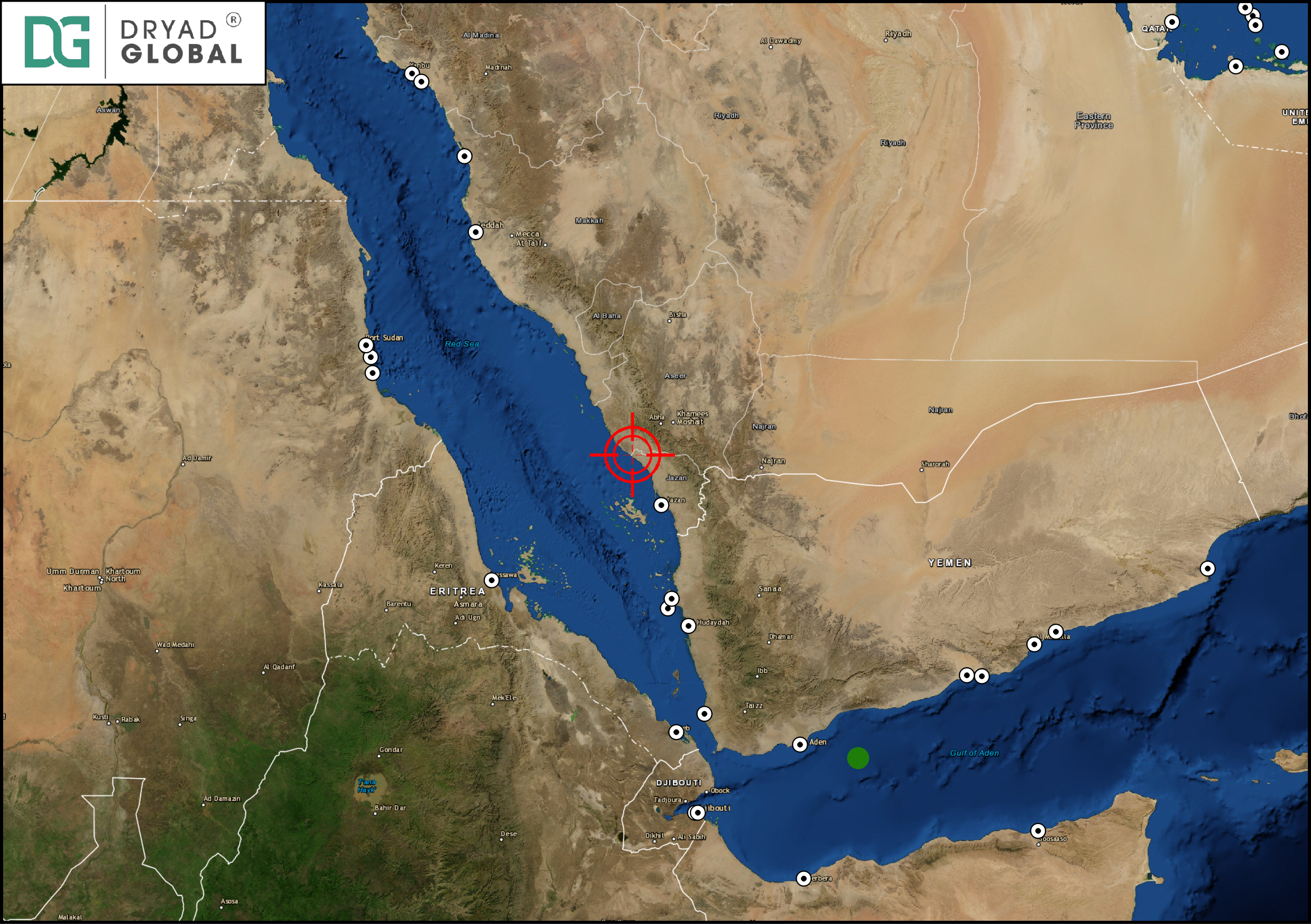3 min read
Red Sea Ceasefire Raises Hopes — But Maritime Risks Remain
By: Dryad Global on May 8, 2025 at 1:40 PM

A recent announcement by the U.S. administration has sparked renewed speculation about the future of commercial shipping in the Red Sea.
On 6 May, the U.S. government confirmed an immediate halt to aerial bombardments in Yemen following a ceasefire proposal brokered by Oman. The proposal includes a mutual agreement between the United States and the Houthi movement to suspend hostilities — a move many hope could reduce tensions in one of the world’s most strategically vital maritime regions.
At face value, this appears to be a significant step toward de-escalation. However, Dryad Global advises all shipping stakeholders to treat this development with caution. Despite the lack of direct attacks on commercial vessels in the region since late 2024, the overall threat landscape remains complex, volatile, and unresolved.
Understanding the Ceasefire Agreement
The ceasefire agreement as currently understood includes the following key provisions:
-
The United States agrees to cease all offensive operations within Yemen.
-
The Houthi movement agrees to refrain from targeting U.S.-flagged ships in the Red Sea and Bab al-Mandab Strait.
While the proposal signals diplomatic progress, Mohammed Ali al-Houthi, a senior figure in the Houthi leadership, has stated that the ceasefire will be assessed “on the ground,” and that it does not include any cessation of Houthi operations targeting Israeli-linked vessels.
This is significant — and concerning. Israel has continued to strike Houthi positions, including recent attacks on Sana’a airport, Hodeidah port, and cement factories in the region. The Houthi movement has made it clear that its campaign against Israel and Israeli-affiliated shipping will continue, regardless of its agreement with the United States.
Why the Risk Isn’t Over
While the ceasefire may lead to fewer U.S.-Houthi engagements, it does not eliminate the broader threats faced by commercial shipping in the Red Sea. The Houthi campaign has been marked by unpredictable and asymmetric targeting, with vessels linked not only to the U.S. or Israel, but also to Russia, China, and neutral third parties coming under attack.
At this stage:
-
The Joint War Committee in London has not changed the war risk designation for the Red Sea or Bab al-Mandab.
-
No international consensus has emerged on redefining the security status of the region.
-
Dryad Global’s assessment of the threat level remains unchanged.
The possibility of escalation remains, especially as Iran, a key backer of the Houthi movement, withdraws personnel from the region — a move likely designed to gain diplomatic leverage ahead of upcoming nuclear negotiations with the United States. Meanwhile, Saudi Arabia has also urged the U.S. to pause bombing operations, reportedly in anticipation of President Trump’s visit to the Kingdom in June.
Dryad’s Assessment
From a maritime risk perspective, the ceasefire is a welcome development, but it is not yet grounds for reduced caution. The region remains highly unstable, with multiple state and non-state actors pursuing divergent agendas.
“This ceasefire is a step in the right direction, but it does not change the fact that the Red Sea remains a high-risk zone for commercial shipping,” said a Dryad Global analyst. “Operators must continue to factor uncertainty, residual hostility, and geopolitical unpredictability into voyage planning and insurance decisions.”
Operational Guidance for Shipping Companies
At this time, Dryad Global recommends:
-
Continued caution for vessels operating in or near the Red Sea and Bab al-Mandab.
-
Heightened vigilance for any vessel with links to Israeli entities or flagged under nations perceived to be allied with Israel or the U.S.
-
Ongoing consultation with trusted maritime security partners and insurance providers.
-
Use of Dryad’s Secure Voyager Hub to receive real-time updates, threat assessments, and routing advice tailored to vessel and fleet profiles.
Stay Informed with Dryad Global
Dryad Global continues to monitor the evolving situation and will provide further updates via the Secure Voyager Hub and our subscriber intelligence briefs. As always, our goal is to ensure operators can navigate complex waters with clear, actionable intelligence and support.
For more information or to request a bespoke security briefing, please contact our intelligence team at sales@dryadglobal.com or visit www.dryadglobal.com.
Related Posts
Reports of Vessels Targeted Off Ukraine
Reporting indicates that the Ukrainian Sea Ports authority has reported two incidents involving..
Joint War Committee: Indian Ocean Risk Areas..
Vessel Hit 23nm ESE Odesa
Reporting from the Ukrainian Sea Ports Authority reported that the Panamanian flagged cargo vessel..




